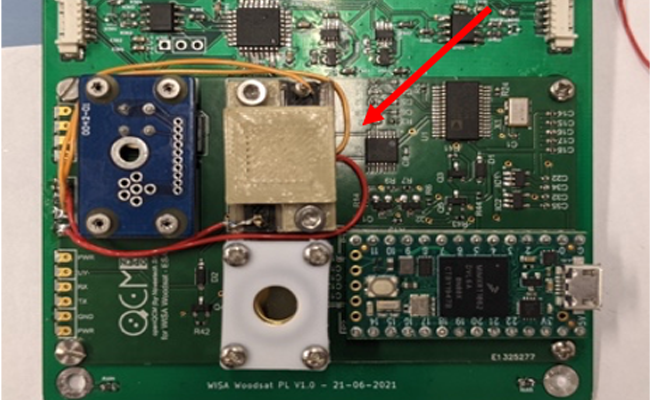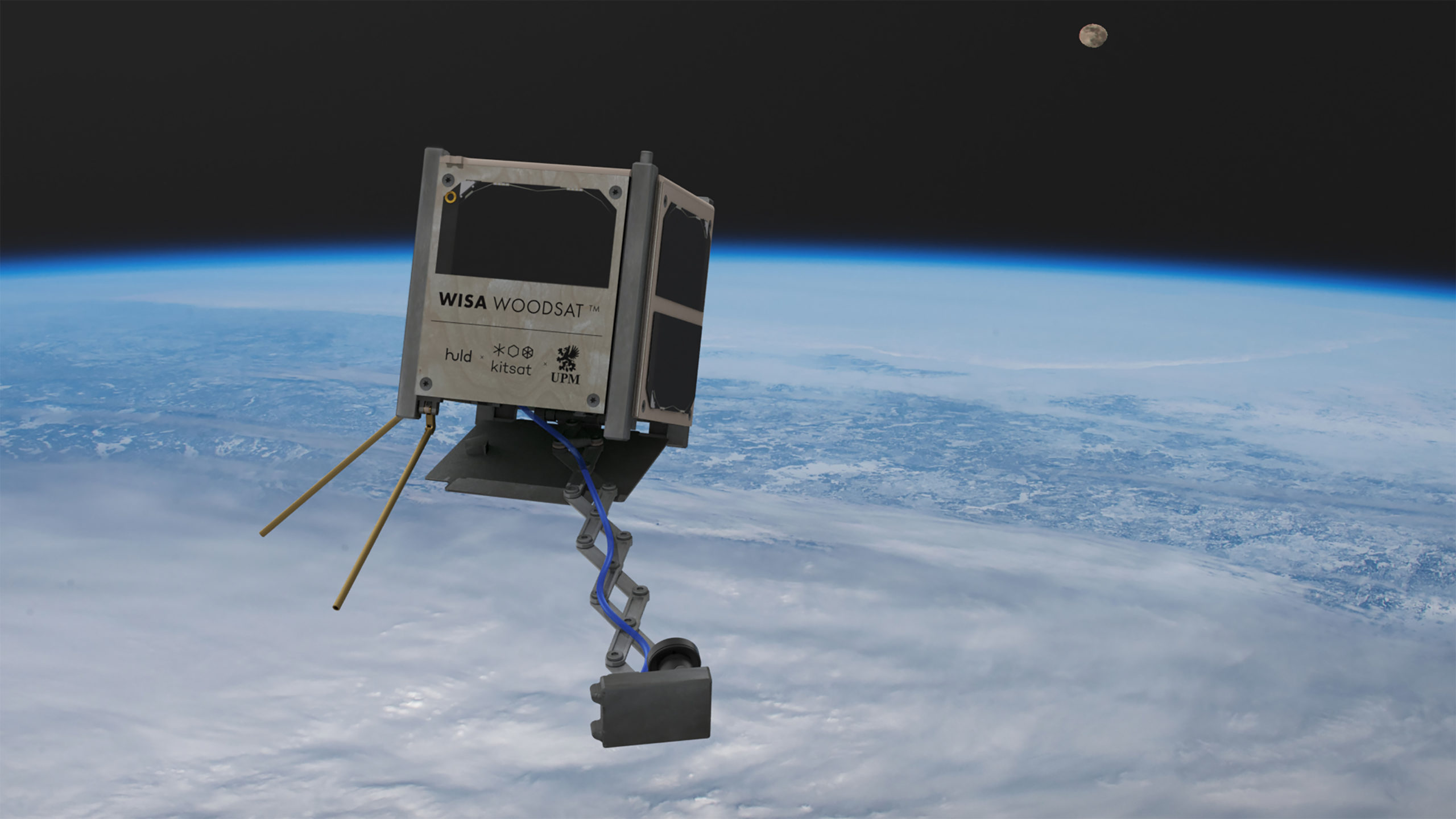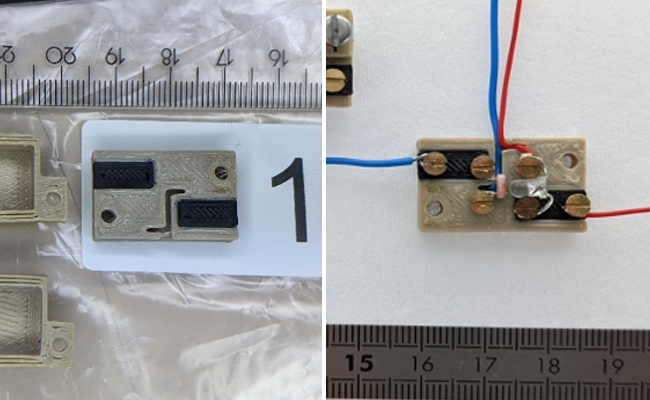Zortrax’s next frontier is space! In early 2022, the Polish 3D printer manufacturer will be launching a 3D printed electrical circuit to low Earth orbit (LEO). Since 2019, the company has been working with the support of the European Space Agency (ESA) to develop a composite 3D printing technology that enables the fabrication of space-ready parts with built-in polymeric-based electrical circuits. Now, an ESA-designed functional demonstrator circuit made with its high-tech industrial Endureal printer will be flight-tested onboard the WISA Woodsat, a Birch plywood nanosatellite designed and built by Arctic Astronautics, a Finnish company specializing in educational space technology.
ESA non-metallic materials and processes engineer Ugo Lafont says the agency had the opportunity to contribute to Woodsat’s payload and requested Zortrax to manufacture one of the functional parts that his team designed using two blends of PEEK, one of the strongest polymers on the planet. The body and cover of the demonstrator are made with the company’s standard Z-PEEK material, which was launched in mid-2021 and is offered commercially for the Zortrax Endureal 3D printer. Additionally, a unique, electrically conductive blend of PEEK, enhanced with carbon nanotubes and graphene nanoparticles developed by ESA, was used to create the electrically conductive paths.

Demonstrator circuit 3D printed on the Zortrax Endureal will be sent as part of the payload on the WISA Woodsat. Image courtesy of Zortrax.
“In recent years we have been working on 3D printing using ‘polyether ether ketone’ – or PEEK – which is a tough thermoplastic with a melting point up around 350ºC, able to do the equivalent job of some metal parts. Now we asked the Polish firm Zortrax, with reliable dual-print commercial printers in their portfolio, to produce test parts,” Lafont explained. “We supplied them with samples of our two PEEK variants, then the company worked on optimizing the dual-print parameters to reliably print electrically conductive paths through a standard PEEK body.”
Facing very tight time constraints, the use of a dual 3D printing process has proven to be an asset to get the demo ready and qualified on time. Now, the goal of the experiment is to reach LEO. Once there, the entirely 3D printed device will transmit its first message and examine how exposure to the space environment will affect the circuit’s functionality during operation.

Testing the 3D printed electrical circuit on Earth: Portrait of the Mona Lisa transmitted through ESA and Zortrax’s 3D-printed, space-grade polymer circuit. Image courtesy of ESA/Zortrax.
Achieving quality and print precision to make flight-ready parts was a significant milestone for the 3D printing company’s R&D team. According to Zortrax’s Jacek Krywko, Leader of Advanced 3D Printing Solutions, the 3D printed circuits used for ground-based tests nearly a year ago were relatively large, and their geometry was simple. However, in just twelve months, his team managed to develop the capability to print a circuit that was many times smaller and had to include holes for screws and routing for cables, along with polymer conductive paths, while making sure it would survive the launch phase and space environment conditions—all this in a device the size of a post stamp.
Still, making such a small composite PEEK demonstrator that can transmit data from space was not easy. Zortrax’s challenge was printing with two different PEEK materials in dual extrusion. Once the capability to print simultaneously with two blends of PEEK had been achieved, Zortrax’s R&D team started perfecting the technology to make the model ready for spaceflight.
Krywko describes at least three issues that had to be solved for the demo to work once launched. First, the dimensional accuracy needed improvement to print smaller parts that would fit on CubeSats, like the WISA Woodsat. Additionally, Zortrax engineers had to increase ESA’s PEEK conductivity to make power and data transferring less energy-intensive. Finally, the gaps in the printed models that appeared between the outer wall of the part and the infill had to be eliminated to get rid of any potentially trapped air that could expand under vacuum when the printed circuit reaches space.
Finally, all issues were resolved by the ESA and Zortrax engineers, who claim they were the first to use dual extrusion with two blends of PEEK to print advanced parts with power and data transfer capabilities. The demonstrator that finally got installed onboard the satellite and passed all demanding tests for flight clearance was a near solid structure. It was a feat that Krywko said: “is very difficult to achieve in printing very small objects with high-performance polymers.”

The world’s first wooden satellite, WISA Woodsat, will launch to LEO in 2022. Image courtesy of Arctic Astronautics.
The WISA Woodsat pioneering mission with the 3D printed electrical circuit will be launched to space on Rocket Lab’s two-stage small-lift launch vehicle Electron from the Māhia spaceport in New Zealand. Like many space companies today, Rocket Labs is also utilizing AM technologies to develop several of its spacecraft components, including the almost entirely 3D printed battery-powered rocket engines that will propel Electron to orbit.
Once WISA Woodsat reaches LEO, it will focus on exploring the behavior of plywood in space for two years. During that time, the CubeSat will gather data on the behavior and durability of the material in the harsh temperatures, vacuum, and radiation of space. Commenting on the project, Zortrax CEO Mariusz Babula suggested that flight-testing 3D printed PEEK polymeric-based electrical circuits for the first time in history “fits great in the overall theme of this groundbreaking mission.”

Zortrax Endureal 3D printer used to create the demonstrator that will fly on the WISA Woodsat mission. Image courtesy of Zortrax.
“We believe that innovative materials and additive manufacturing will make space more accessible and easier to reach for businesses and scientists worldwide. And Zortrax has a major role to play in shaping this future.”
Apart from printing the PEEK demonstrator with embedded electrically conductive paths, Zortrax is currently engaged with ESA on two new undisclosed research projects. In the meantime, the company’s R&D team is working on making the composite 3D printing capabilities and other features, designed specifically for ESA, available as software updates to all customers who bought Endureal 3D printers.
Subscribe to Our Email Newsletter
Stay up-to-date on all the latest news from the 3D printing industry and receive information and offers from third party vendors.
Print Services
Upload your 3D Models and get them printed quickly and efficiently.
You May Also Like
Metal Powder Supplier Elementum 3D Added to $46B Air Force Contract
Elementum 3D, a Colorado-based developer and supplier of metal powders used in additive manufacturing (AM), announced that the company has been added to the vendors list in the fourth on-ramp...
Ursa Major Lands $28.6M AFRL Deal for 3D Printed Draper Engine Flight Demo
The US Air Force Research Laboratory’s (AFRL’s) Rocket Propulsion Division at Edwards Air Force Base has awarded a $28.6 million contract to Ursa Major for follow-on work related to the...
3D Printing Financials: Rocket Lab’s Record-Breaking Year and Over 20 Launches Coming in 2025
Rocket Lab (Nasdaq: RKLB) closed 2024 with its best year yet. The company launched more rockets, signed more contracts, and expanded deeper into spacecraft and satellite production than ever before....
US Air Force Taps Beehive to Study 3D Printed Jet Engines
Propulsion 3D printing firm Beehive Industries secured a contract from the U.S. Air Force Life Cycle Management Center through SOSSEC. SOSSEC is a company that manages Other Transactions Authority (OTA)...


































